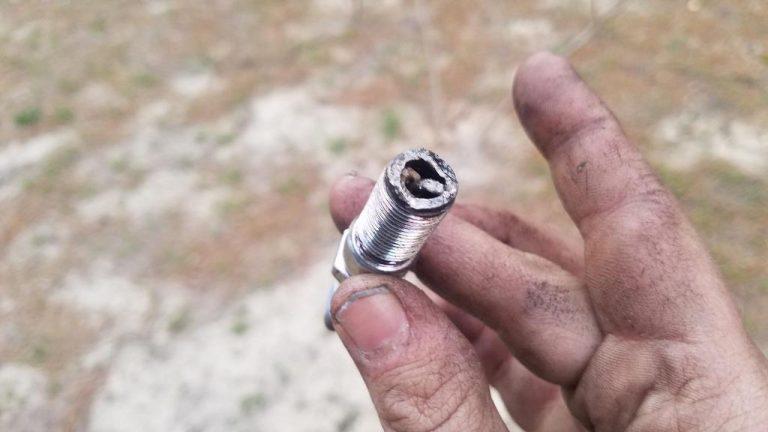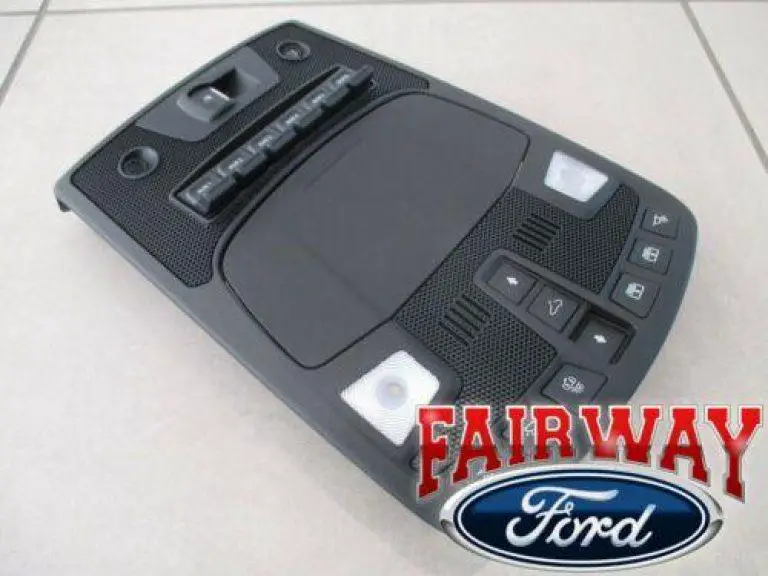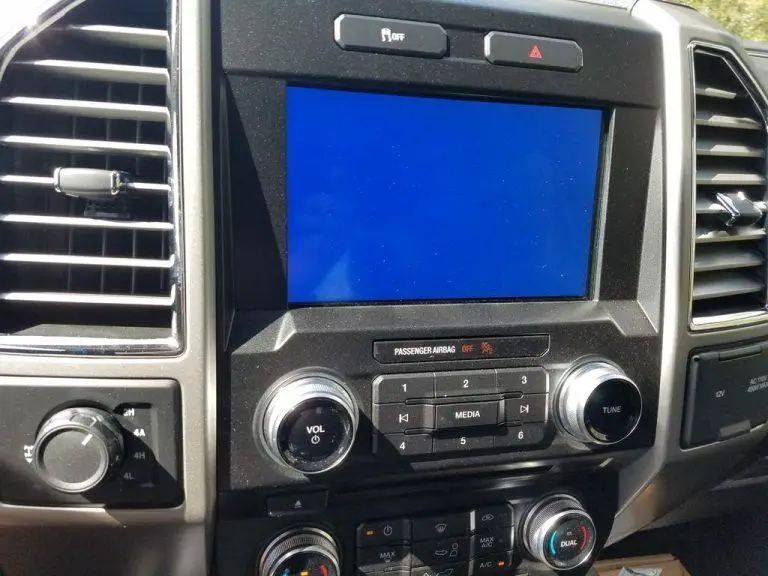Dana 50 Vs Dana 60: Ultimate Guide to Axle Differences
The Dana 50 and Dana 60 are both popular axle choices for off-road vehicles. The Dana 60 is generally stronger and more durable than the Dana 50.
The Dana 50 and Dana 60 are often compared in off-road and heavy-duty vehicle communities. The Dana 50 is commonly used in lighter-duty applications, while the Dana 60 is favored for its robustness and ability to handle more stress. The Dana 60 features thicker axle tubes, larger diameter axles, and higher spline counts, making it more suitable for extreme conditions.
On the other hand, the Dana 50 is lighter and may offer better fuel efficiency. Choosing between these axles depends on the specific needs and intended use of the vehicle.
Design And Construction
Understanding the design and construction of Dana 50 and Dana 60 axles is crucial. It helps in making an informed choice for your vehicle. These axles differ in material quality and axle housing, impacting performance and durability.
Material Quality
The Dana 50 axle typically uses standard steel. It is designed for moderate stress and load. On the other hand, the Dana 60 axle is crafted from high-strength steel. This makes it more robust and capable of handling heavier loads.
Here’s a comparison table to highlight the material differences:
| Axle Type | Material Quality |
|---|---|
| Dana 50 | Standard Steel |
| Dana 60 | High-Strength Steel |
Axle Housing
The axle housing in Dana 50 is lighter. This makes it suitable for light-duty vehicles. It has a smaller diameter, which reduces weight but also strength.
Comparatively, the Dana 60 axle housing is more substantial. It has a larger diameter, offering enhanced durability. This makes it ideal for heavy-duty trucks and off-road vehicles.
- Dana 50 Axle Housing: Lighter, smaller diameter, suitable for light-duty.
- Dana 60 Axle Housing: Heavier, larger diameter, ideal for heavy-duty.
These differences in design and construction affect vehicle performance. Choose the axle that best meets your vehicle’s needs.
Strength And Durability
When comparing the Dana 50 and Dana 60 axles, strength and durability are crucial factors. These components play a significant role in off-road performance and vehicle reliability. Let’s dive deeper into their load capacity and wear and tear resistance.
Load Capacity
The Dana 60 axle has a higher load capacity compared to the Dana 50. This makes it a better choice for heavy-duty applications and off-road adventures.
- Dana 50: Typically supports vehicles with lighter loads.
- Dana 60: Designed to handle heavier loads with ease.
For vehicles carrying substantial weight, the Dana 60 offers superior performance and reliability.
Wear And Tear Resistance
The construction of the Dana 60 axle provides enhanced wear and tear resistance. It features thicker axle shafts and stronger components, making it more durable over time.
| Axle | Wear and Tear Resistance |
|---|---|
| Dana 50 | Moderate |
| Dana 60 | High |
Dana 60 axles are built to withstand rough conditions and heavy use, providing a longer lifespan.
Choosing between Dana 50 and Dana 60 depends on your specific needs. For heavy-duty use, the Dana 60 is the superior choice.
Gear Ratios
Understanding gear ratios is essential when comparing the Dana 50 and Dana 60 axles. Gear ratios directly impact the performance and efficiency of your vehicle. This section will explore the available ratios for each axle and their effects on performance.
Available Ratios
The Dana 50 and Dana 60 offer a variety of gear ratios. These ratios determine the number of engine revolutions needed to turn the wheels once.
| Axle Model | Available Ratios |
|---|---|
| Dana 50 |
|
| Dana 60 |
|
Impact On Performance
Gear ratios influence your vehicle’s speed, torque, and fuel efficiency. A lower ratio like 3.31 means higher speed but lower torque. This is suitable for highway driving.
Higher ratios like 4.56 or 4.88 provide more torque but less speed. These are ideal for off-road and towing. Both Dana 50 and Dana 60 offer versatile options.
Choosing the right gear ratio depends on your driving needs. For heavy-duty use, the Dana 60’s higher ratios are beneficial. For daily driving, the Dana 50’s lower ratios may be more efficient.

Credit: www.ford-trucks.com
Applications
The Dana 50 and Dana 60 axles serve distinct purposes in various vehicles. Understanding their applications can help you choose the right axle for your needs. This section explores the common uses for both Dana 50 and Dana 60 axles.
Common Uses For Dana 50
The Dana 50 axle is often found in light trucks and SUVs. It is suitable for moderate off-road adventures and daily driving. Here are some common uses:
- Light Trucks: Ideal for models like Ford F-250 and Ford Excursion.
- SUVs: Used in heavy-duty SUVs for better stability.
- Moderate Off-Roading: Handles rugged terrains but not extreme rock crawling.
This axle is designed for vehicles that need a balance of on-road comfort and off-road capability.
Common Uses For Dana 60
The Dana 60 axle is built for heavy-duty applications. It is commonly used in trucks and off-road vehicles. Here are some typical applications:
- Heavy-Duty Trucks: Found in models like Dodge Ram 2500 and 3500.
- Off-Road Vehicles: Ideal for extreme off-roading and rock crawling.
- Towing and Hauling: Perfect for vehicles that tow heavy loads.
This axle is designed for durability and strength, making it a top choice for demanding tasks.
| Feature | Dana 50 | Dana 60 |
|---|---|---|
| Vehicle Type | Light Trucks, SUVs | Heavy-Duty Trucks, Off-Road Vehicles |
| Off-Road Capability | Moderate | Extreme |
| Towing Capacity | Moderate | High |
Choosing between Dana 50 and Dana 60 depends on your vehicle’s needs. Use this guide to make an informed decision.
Maintenance And Repair
Maintaining and repairing your axle is crucial for a smooth ride. The Dana 50 and Dana 60 are popular axles for off-road enthusiasts. Each has unique maintenance needs and repair challenges.
Common Issues
Both Dana 50 and Dana 60 axles have common issues that require attention:
- U-joint Wear: Constant use wears out the U-joints.
- Seal Leaks: Leaks are common in both axles.
- Bearings: Bearings can wear out or get damaged.
- Axle Shafts: Stress can cause axle shafts to break.
Regular inspections help catch these issues early. Preventive maintenance saves costs and prevents breakdowns.
Repair Costs
Repair costs vary between the Dana 50 and Dana 60:
| Component | Dana 50 | Dana 60 |
|---|---|---|
| U-joint Replacement | $100 – $150 | $150 – $200 |
| Seal Replacement | $50 – $100 | $75 – $125 |
| Bearing Replacement | $200 – $300 | $250 – $350 |
| Axle Shaft Replacement | $300 – $500 | $400 – $600 |
Dana 60 repairs generally cost more. This is due to heavier-duty components. Always use quality parts for repairs. This ensures longevity and performance.
DIY repairs can save money. But professional services offer reliability. Weigh your options based on your skills and budget.
Performance Comparison
When choosing between the Dana 50 and Dana 60 axles, performance is key. These axles are popular among off-road enthusiasts and heavy-duty truck owners. We’ll compare their off-road and on-road performance to help you decide which one suits your needs.
Off-road Performance
Off-road performance is crucial for those who love adventure. The Dana 60 outshines the Dana 50 in rugged terrains due to its sturdier build.
- Durability: The Dana 60 has thicker axle shafts.
- Load Capacity: It can handle heavier loads.
- Ground Clearance: Both provide decent ground clearance, but the Dana 60 edges out.
Here’s a quick comparison table:
| Feature | Dana 50 | Dana 60 |
|---|---|---|
| Axle Shaft Diameter | 1.31 inches | 1.5 inches |
| Ring Gear Diameter | 9 inches | 9.75 inches |
| Max Load Capacity | 6,000 lbs | 7,000 lbs |
The Dana 60 offers stronger components, making it better for extreme off-roading.
On-road Performance
On-road performance is essential for daily driving. The Dana 50 and Dana 60 provide stability and reliability. But, there are differences worth noting.
- Smoothness: Dana 50 offers a smoother ride due to its lighter build.
- Fuel Efficiency: Dana 50 consumes less fuel because it is lighter.
- Handling: Both provide good handling, but Dana 50 is slightly better.
Here’s a comparison of their on-road features:
| Feature | Dana 50 | Dana 60 |
|---|---|---|
| Smoothness | High | Medium |
| Fuel Efficiency | Better | Good |
| Handling | Excellent | Very Good |
If you need a daily driver, the Dana 50 is slightly better for comfort and efficiency.
Cost Considerations
Choosing between the Dana 50 and Dana 60 involves understanding their costs. Both initial purchase price and long-term value are essential to consider.
Initial Purchase Price
The initial purchase price is often the first factor. A Dana 50 axle generally costs less than a Dana 60. This lower price makes it attractive for budget-conscious buyers.
Here’s a quick comparison:
| Axle Type | Average Price Range |
|---|---|
| Dana 50 | $800 – $1,200 |
| Dana 60 | $1,200 – $1,800 |
The Dana 50 offers a lower entry cost. This lower price can be appealing for immediate needs. But it’s crucial to consider future expenses.
Long-term Value
Long-term value is another critical aspect. The Dana 60 often has better long-term value due to its durability. This axle is built for heavy-duty performance and can handle more stress.
Key points to consider for long-term value:
- Durability: The Dana 60 lasts longer under extreme conditions.
- Maintenance: Fewer repairs can save money over time.
- Resale Value: Dana 60 axles retain more value.
The Dana 60 might cost more upfront. Yet, its strength and longevity often make it a better investment. For those needing reliable performance, this can be worth the higher price.
Here’s a summary of factors affecting long-term value:
- Durability: Less wear and tear.
- Maintenance Costs: Fewer repairs needed.
- Resale Value: Higher resale price.
Dana 50 has a lower initial cost. Dana 60 offers better value over time.
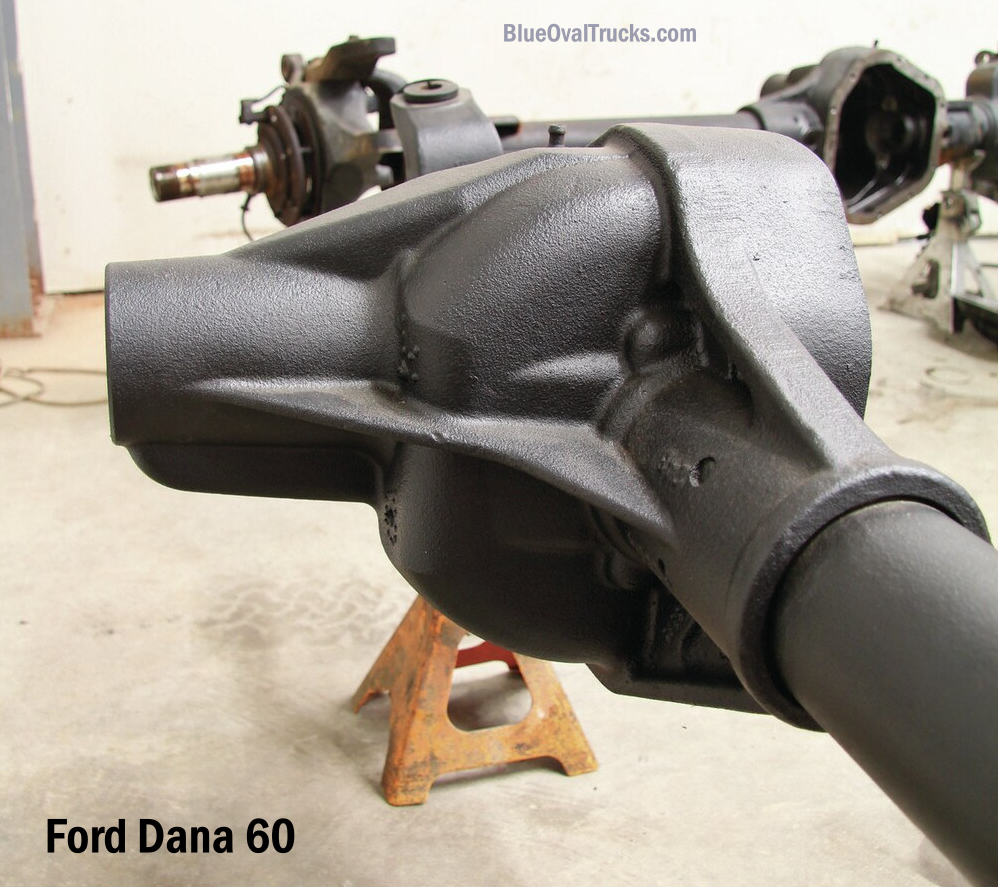
Credit: www.blueovaltrucks.com
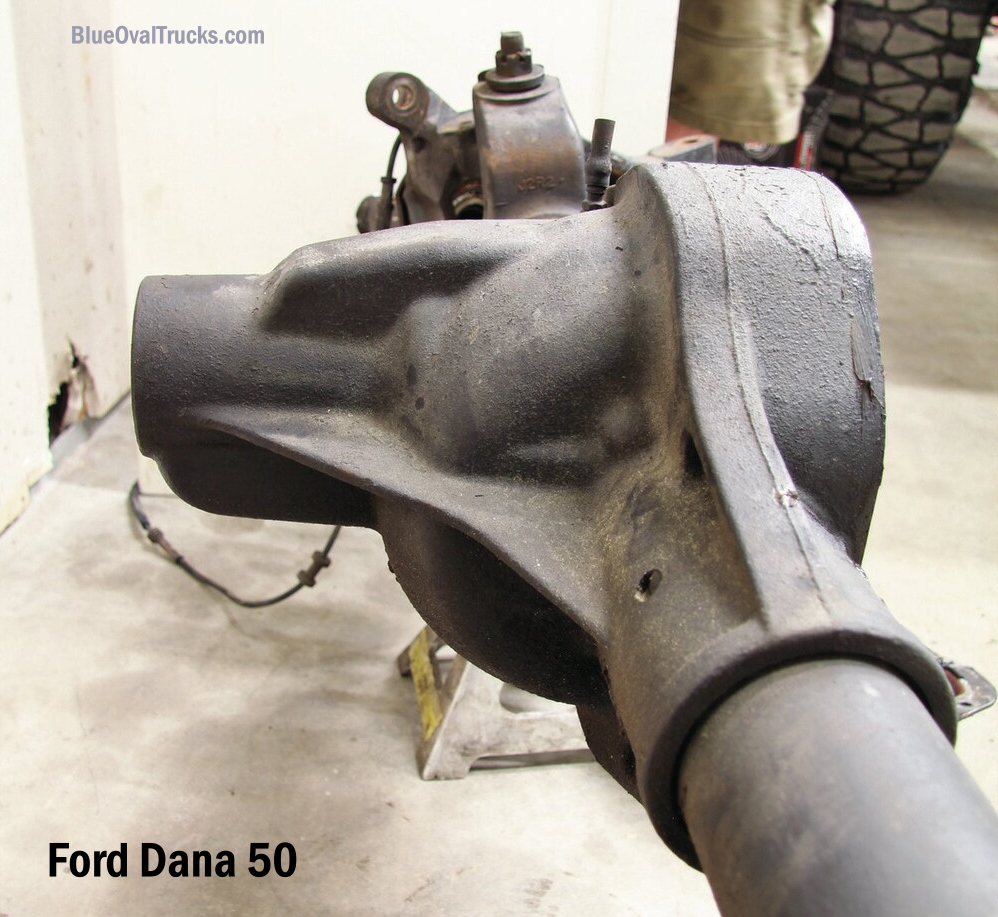
Credit: www.blueovaltrucks.com
Frequently Asked Questions
How Do You Tell The Difference Between A Dana 50 And A Dana 60?
Check the axle tube diameter. Dana 50 has a 2. 5-inch tube, while Dana 60 has a 3-inch tube. Examine the differential cover shape; Dana 50 is more oval, Dana 60 is more angular.
Is The Dana 50 Strong?
Yes, the Dana 50 is strong. It offers reliable performance for light to medium-duty trucks and off-road vehicles.
How Big Of Tires Can A Dana 50 Handle?
A Dana 50 axle can typically handle tires up to 35 inches in diameter. Larger tires may strain the axle.
How Much Hp Can A Dana 60 Handle?
A Dana 60 can handle up to 600-700 horsepower. It is a strong axle commonly used in high-performance vehicles.
Conclusion
Choosing between the Dana 50 and Dana 60 depends on your vehicle’s needs. Both axles offer unique advantages. The Dana 50 is lighter, ideal for moderate use. The Dana 60 provides superior strength for heavy-duty applications. Assess your requirements carefully to make the best decision for your vehicle’s performance and durability.


